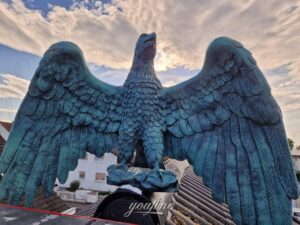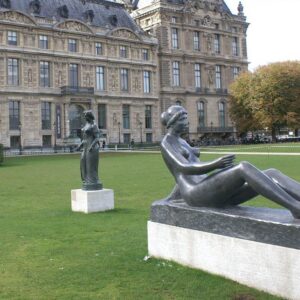Mermaid statues are so popular among our customers because of the beauty. They can put it by the sea or swimming pool; they can put it in the city center or under the glass table, even at one unknown street. No matter where they would be put, they would express our chase to beauty of art and the best wishes in our heart.
There’s a huge amount of work in producing a bronze mermaid. We appreciate the beauty, and also we should appreciate the work from the creators. Here at YouFine,it’s our pleasure to introduce the traditional ancient method to create one mermaid statue.
Normally, masters would use the “lost wax casting” method.
And here are the steps for your ref:
Step1:Make the 1:1 clay mold
This step is the basic and most important step in the whole production process. It would take half of the whole production time.
Master need to make the iron frame, this is just like the bones of the body. Then use clay to fulfill the frame. And then use hand and knife to carve every detail of the mermaid, such as the hair, the eyes, the mouth etc. So clay mold masters would be like artist more. Because they should understand the mermaid statue.they should express the inner spirit of the mermaid statue, no matter the spirit is happy or sad.Masters would revise the mold again and again until it is perfect.
Step2: Change the clay mold to the wax mold
Masters would use professional method to change the clay mold to the plaster mold. Then, used plaster molds of the underpinning to create wax pieces of the statue.The wax mold is the preparation for the casting bronze step.during the process of changing to wax mold, some tiny details (such as eyes, hair or finger) may not become so obvious,then masters would use some tiny tools to revise every detail.
Step 3 :After heating the bronze in the furnace, masters poured the molten metal into the cavity where the wax previously was.
Step4: Casting the wax mold into the bronze pieces
Then masters employed the “lost wax” process to create the bronze mold, dipping the pieces in shell-fused silica sand that builds up, coat after coat, until it’s about half an inch thick.
Step5: Welding and polishing
Then masters would weld every piece together. Normally while polishing and welding at the same time.
Step6: coloring
Then masters would color the metal with patina, a chemical mixture that comes in brown or green and smells pungently of rotting eggs.And during the coloring, masters need to use heat to add the patina to his bronze statue of a mermaid.This would help the color mixed with the statue strongly.
It is team work to casting one statue.Professional masters would focus on every step to ensure the quality.
The sculptor specializes in figures in motion; his mermaid smiles, figures dance, his hippos wrestle and his giraffes run.
This is also our lifetime goal.
Wish we would make more vivid statues in the future for you, all my dear friends!







